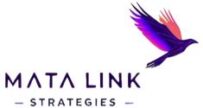
6 min read
Why do we struggle with duality?
Imagine this: you’re scrolling through social media, and every topic—from politics to parenting—feels like a battlefield. There’s no room for nuance. It’s either right or wrong, good or evil, black or white. This is polarization at work, a cognitive shortcut that simplifies the world but often at the cost of understanding its complexity.
But what if we could see things differently? What if we could hold two seemingly contradictory truths at once? This ability—what we call embracing duality—isn’t just a philosophical exercise. It’s a strategic necessity in a world that demands adaptability and insight.
Polarization vs. Duality: what’s the difference?
- Polarization forces us into rigid camps, making dialogue difficult and solutions even harder to find.
- Duality acknowledges opposing forces without forcing a choice.
It’s the difference between seeing competition as a fight to the death versus recognizing how competition and collaboration can coexist.
Think about the yin and yang in Eastern philosophy—darkness and light, stillness and movement. One does not eliminate the other; they create balance. Many ancient traditions understood that opposing forces could be complementary, not contradictory. Western thought, however, has often leaned into binary thinking, exacerbated by the Enlightenment’s focus on rational categorization.
Psychological research backs this up. Studies on cognitive rigidity (Gelfand et al., 2011) show that societies with more binary, rule-based thinking struggle with adaptability in times of uncertainty. On the other hand, individuals who embrace paradoxical thinking demonstrate higher creativity and resilience (Smith & Lewis, 2011).
How does this play out in the real world?
- Business and Leadership — Some companies embrace both profit and purpose. Patagonia, for example, is a for-profit company that also prioritizes environmental activism. It doesn’t have to choose between the two; it thrives because it integrates both.
- Politics — Societies that function well don’t suppress differing ideologies but find ways to let them coexist productively. Scandinavian countries often blend capitalist economies with strong social safety nets, challenging the idea that it must be one or the other. Yet, in highly polarized political systems, nuanced solutions are often dismissed in favor of extreme positions, leading to stagnation or radical swings in policy (Mason, 2018).
- Feminism and Gender Roles — The modern feminist movement sometimes struggles with internal polarization. Can one be both a strong, independent woman and embrace traditionally feminine traits? Embracing duality means rejecting the notion that empowerment must look one way. Research on gender identity fluidity (Connell & Pearse, 2014) suggests that societies that accommodate multiple expressions of gender roles foster greater psychological well-being.
- Personal Growth — Many people see personal development as a choice between ambition and inner peace. But what if you could have both? Strategic foresight teaches us that embracing paradoxes often leads to more innovative and sustainable solutions. In psychology, this concept is known as cognitive complexity, which correlates with emotional intelligence and adaptability (Tetlock, 2005).
The challenges of embracing duality
While duality offers numerous benefits, it is not without its challenges:
- Internal Conflict — Holding two seemingly contradictory truths can create cognitive dissonance, especially in cultural or organizational contexts that favor binary thinking.
- Decision Paralysis — The fear of making the wrong choice can hinder action when faced with competing perspectives.
- Perceived Lack of Commitment — In highly polarized contexts, embracing duality can be seen as indecision rather than wisdom.
Duality in different cultures
Many cultures have long traditions of dualistic thinking that can offer valuable insights:
- Eastern Philosophy (Yin and Yang) — In Chinese philosophy, the concept of yin and yang represents the balance between opposing yet complementary forces. This approach can be applied in modern contexts, such as business management, where balancing innovation and stability is key.
- African Philosophy (Ubuntu) — The Ubuntu philosophy, prevalent in many African cultures, emphasizes the interconnectedness of individuals and the community. This approach can help reconcile individualism and collectivism in social or organizational contexts.
- Indigenous Philosophy (Circular Thinking) — Many indigenous cultures adopt a circular approach to time and nature, where opposites do not exclude but complement each other. This can be applied in environmental contexts, balancing economic development and sustainability.
- Islamic Philosophy (Tawhid and Duality) — In Islamic thought, the concept of Tawhid (the oneness of God) is central, but there is also an acknowledgment of duality in creation. For example, the Quran often speaks of pairs in nature—day and night, male and female, life and death. These dualities are seen as signs of God’s wisdom and balance in the universe. In practical terms, this can be applied in leadership and governance, where the balance between justice and mercy, or between individual rights and communal responsibilities, is crucial. Islamic finance, for instance, balances profit-making with ethical considerations, avoiding interest (riba) and promoting risk-sharing.
Practical tools for embracing duality
- Meditation and Mindfulness — Practices like Vipassana or mindfulness meditation can help develop the ability to hold two opposing perspectives without feeling overwhelmed. These practices teach observing thoughts and emotions without judgment, fostering greater mental openness.
- Constructive Dialogue Techniques — Tools like Socratic Dialogue or Debate Mapping can help explore opposing perspectives in a structured and respectful manner. These techniques encourage participants to consider the strengths and weaknesses of both sides, facilitating deeper understanding.
- Strategic Analysis Tools — Methods like SWOT analysis (Strengths, Weaknesses, Opportunities, Threats) or the Eisenhower Matrix can be used to evaluate complex situations from multiple angles. These tools help identify the pros and cons of each option, leading to more informed decisions.
- Scenario Planning Workshops — Organizing workshops where participants explore different future scenarios can help develop dualistic thinking. For example, in a company, employees could be divided into groups to explore optimistic and pessimistic scenarios regarding AI’s impact, then find hybrid solutions.
The limits of duality
While duality offers many advantages, it’s important to recognize its limitations.
In some contexts, an overly dualistic approach can lead to ineffective compromises or a lack of decisive action. For example, in crisis situations like a health emergency or war, quick and unilateral decisions might be necessary, without the luxury of considering all perspectives.
Additionally, duality can be perceived as indecision or lack of clarity, especially in cultures that value strong, decisive leadership. In these cases, it’s important to strike a balance between open-mindedness and the need to take clear positions.
Finally, duality requires significant cognitive and emotional effort, and not everyone is willing or able to sustain it. In highly polarized contexts like politics, embracing duality can be seen as a lack of commitment or conviction.
Why is this crucial for Strategic Foresight?
Strategic foresight isn’t about predicting a single future—it’s about navigating multiple possible futures. Leaders and organizations that embrace duality are better equipped to handle uncertainty because they can hold multiple perspectives at once.
For example, the future of AI is often painted in extremes: either a utopia where AI solves all problems or a dystopia where it replaces humanity. The truth is likely somewhere in between. The companies and policymakers who recognize this are the ones who will shape AI’s trajectory instead of being blindsided by it. Studies on scenario planning (Schoemaker, 1995) show that organizations that engage in multi-perspective foresight are significantly better at responding to rapid changes.
How can we develop the capacity to hold duality?
- Practice cognitive flexibility — Seek out perspectives that challenge your own. Read books or articles that oppose your viewpoint. Exposure to contrasting ideas enhances mental agility (Stanovich & West, 2000).
- Ask better questions — Instead of asking, “Which side is right?” ask, “What truth does each side hold?”
- Embrace “Yes, and” thinking — Instead of framing debates as “either/or,” consider how both perspectives might contribute to a larger understanding.
- Use scenario planning — In strategic foresight, scenario planning forces us to consider multiple futures instead of assuming a single outcome. Apply this to your decision-making process.
- Develop a continuum perspective — Instead of categorizing everything into black and white, see it as a spectrum. Many of the most effective strategies emerge not from one extreme or another but from navigating the in-between.
The bottom line
Polarization is easy. Duality is harder—but far more rewarding. The most successful individuals, leaders, and businesses aren’t those who pick a side and dig in. They’re the ones who can stand in the middle, embrace complexity, and use it to create better, more resilient strategies for the future.
However, embracing duality is not without its challenges. It requires cognitive flexibility, emotional resilience, and a willingness to navigate uncertainty. By understanding its limits and integrating diverse cultural perspectives, we can develop a more nuanced and effective approach to duality.
As we navigate an increasingly complex world, the ability to hold duality may be one of the most valuable skills we can cultivate. Whether in leadership, policymaking, or personal decision-making, the capacity to engage with nuance and contradiction isn’t just an intellectual exercise—it’s a pathway to greater insight, adaptability, and innovation.
